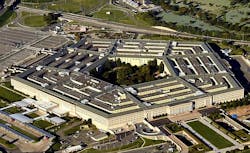Fiscal 2019 could be 'high-water mark' of defense spending
The Military & Aerospace Electronics take:
19 Nov. 2018 -- Norquist declined to get ahead of the White House in addressing the impact of President Trump’s recent directive to all agencies to cut spending next year by 5 percent. But economic forecasts portray the fiscal 2019 defense budget as “the high-water mark” for defense spending while also warning of rising debt and a coming recession.
Norquist predicted major shifts in the defense budget’s structure based on the Trump administration’s December 2017 National Security Strategy. Its underlying theme, he said, “is a return of great power competition” with Russia and China, which will requires sub-agencies and contractors to better serve the warfighter bound for “high-end fights” in unwelcoming terrain and “unfriendly planes” overhead during the voyage to the battleground.
Already, the Pentagon has begun hiring thousands of new Air Force, Navy shipyard, and munition production-line workers, while foreign military sales to allied partners have risen from $33 billion to $54 billion.
Related: 2019 defense budget: more troops, more pay, more ships, more planes
Related: The U.S. defense budget might not increase in 2020 -- but defense contractors needn't worry
John Keller, chief editor
Military & Aerospace Electronics
Ready to make a purchase? Search the Military & Aerospace Electronics Buyer's Guide for companies, new products, press releases, and videos
